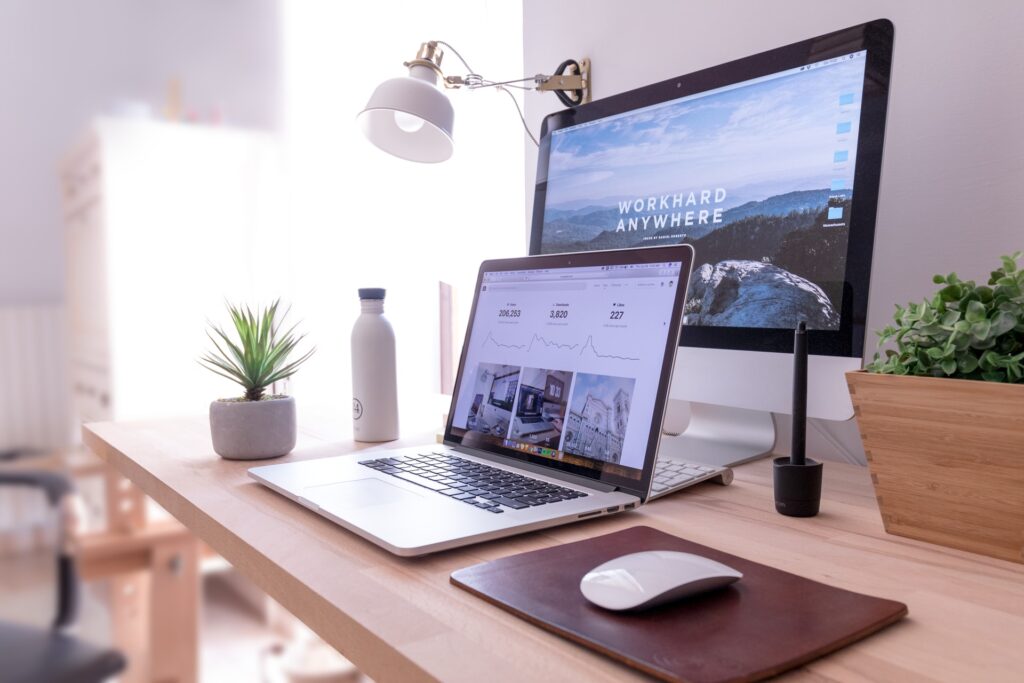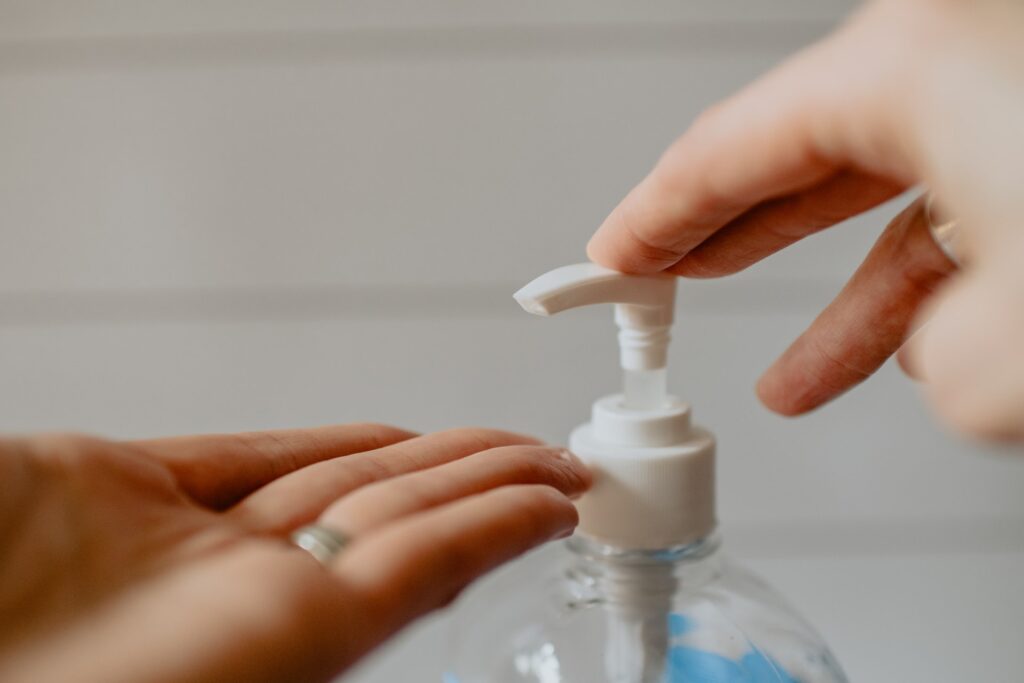How Has A Pandemic Changed Health And Safety At Work

2020 will live in our memories for years to come as the year that changed Health and Safety at work. The Covid-19 pandemic has brought a drastic shift across the world in what we do, how we do it and even where. Some believe these are changes for the better while others miss the normality they had before.
What’s clear to us is that the situation has changed and, even when the pandemic ends, some of the changes adopted will stick around. Regardless of whether you approve or not, we have to accept this moving forward, and that means looking at what has changed at work and how to best adapt, including updating health and safety policies.
Cleanliness And Hygiene

Perhaps unsurprisingly, the pandemic has highlighted the importance of cleanliness and hygiene at work. While this has always been important, with some sectors and businesses already having strict protocols in place, it’s fair to say that it’s been less of a focus for others.
Even businesses that don’t see a lot of people beyond employees have tightened up this area of their Health and Safety strategy. This is partly to comply with regulations passed down by the Government but also to create a safe environment for workers, visitors and customers.
The most obvious thing you’ll see is hand sanitiser at the entrances and throughout business venues for people to use, reducing the risk of transmitting germs and illnesses.
Cleaning Equipment
One of the big changes to come as a result of the pandemic is the increased cleaning schedules. We know that the risk of transmission of covid-19 – and other germs and illnesses – increases as more people touch surfaces or use equipment, so rigorous cleaning of equipment and surfaces is important.
This is true even if few people, or no one else at all, is expected to touch equipment, such as computers, stationery or other appliances. As Health and Safety at work is about minimising the risks to everyone, it makes sense that it would become policy to increase cleaning schedules and responsibilities to reduce the risk of transmission.
This is one of the changes likely to remain going forward.
Using Communal Spaces
How we’ve used communal spaces at work have also changed. When workers have been able to return to work, some restrictions have still been in place, and limiting the use of areas where people can transmit illnesses is just one of the ways businesses have tried to reduce this risk.
This normally comes in the form of reducing the amount of people in a given area at a time, either by staggering breaks during the day or by offering multiple areas that different people can use when needed.
On top of efforts to lower the number of people in the workplace on any given day, too (thanks to hybrid working patterns), this can help drop contact times. Increased cleaning is also included in this.
New Risk Assessments
Health and Safety includes a lot of risk assessments, which are documents outlining different scenarios, the risks involved and the steps taken to reduce them.
Whenever a new risk is identified, a risk assessment is created. This also includes updating existing assessments to make sure they are always relevant and accurate. A pandemic, along with the accompanying updates to regulations and policies, means it’s time to look at these documents and address anything that’s missing.
Whether that’s increased cleaning schedules, new products needed, or controls on the number of people in an area at a time, the right documentation matters and should not be forgotten about. If something happens, your business might be liable without proof you have taken steps to address the problem.
Changes To Health And Safety In The Workplace

Pandemics change everything, and the workplace is no different. However, it’s important to remember that the workplace doesn’t just mean the office, shop, venue or other centralised location a business has used previously – it also means the home, too.
The change of workplace in itself means a whole new range of Health and Safety risks to account for. While it is a daunting task, ensuring each employee has a safe environment to work in is essential.
At The Office
We’ve touched upon cleaning schedules and limiting the numbers of people in a given area already, and these are likely to be around for a while, with strict rules being put in place whenever a surge in infections appear.
Depending on the type of business, and how you operate, there may be other options such as face coverings, social distancing, limiting equipment use and more. This is something that needs to be thought through carefully, and any implementation needs to be clear as to who’s affected and what impact this may have.
Some changes may only affect employees, while others may be aimed at customers. Knowing what can be done, and what to do when processes aren’t followed, should be documented and potential outcomes prepared for.
Embracing Remote Working
Remote working has allowed many businesses to operate during lockdowns and while reduced numbers are allowed in the office or venue. Utilising technology means that disruption hasn’t been as bad as anticipated – indeed, many employees and businesses have seen the benefits of such a model.
Unlike the workplace, however, working at home means different health and safety risks than what would be found in the office. There are also new distractions to take into account, but these are outweighed by the lack of commute.
For employers, ensuring workers have the right equipment and setup at their homes matters. Not only is this important from a physical health perspective, but also mental. The right desk and chair setup, supplies and even a good source of lighting should be considered, as these factors are taken into account at work. It’s more work to make sure every worker has a good workspace at home, but the pandemic showed how important it is to be prepared.
Hybrid working can put extra strain on a company’s resources, as you need enough equipment in the workplace as well as ensuring the right tools are available at the worker’s home.
Putting Health And Wellbeing First

The pandemic has allowed a lot of people and businesses to take a look at where their priorities lie, and it’s fair to say there has been a split in opinion on this topic. What is certain, is that personal health and wellbeing has been brought to the forefront, and it’s likely to stay there for a lot of people.
Whether it’s from burnout due to overworking, not getting enough exercise, feeling isolated, lockdown fatigue or a physical illness, more workers are making sure to take the time to get better before returning to work.
Limiting The Spread of Illness
One of the most important lessons to come from the pandemic is that of personal wellbeing. Covid-19 has been in the spotlight, but there are other illnesses that can afflict staff and customers.
As a result of the pandemic, there’s a bigger focus on our health and physical conditions. When ill, it’s become more acceptable to stay home and reduce transmission, even if it’s a simple cold. In some industries, there’s an expectation to work when feeling under the weather or ill due to a lack of cover and business still to complete, but this is starting to shift as a result of the pandemic and updated Health and Safety policies.
Where remote working is an option, this adds extra flexibility to working schedules and patterns, while reducing the risk of transmission. This can stop others from getting ill, lowering productivity and efficiency.
Managing The Wellbeing Of Staff
Lockdown was hard for a lot of people, especially those living alone and without support networks. Remote working did help provide some connection to others, but there’s more to be done.
Even with hybrid working, ensuring there’s good opportunities for socialising is important. Mimicking the watercooler chats online isn’t possible, but software and apps for team – and inter-team – collaboration can also offer people the chance to chat on topics away from work. Setting up opportunities for video chats can help people stay connected, too, and ensure that when in-person social events happen, people have a good idea of what to expect from each other.
Want To Know More About Adapting To Life After A Pandemic?
Health and Safety at work is a constantly changing topic, and one that varies from industry to industry. When you’re looking for advice or support, you want experts that understand your business and the market it operates in, as there’s no ‘one-size-fits-all’ answer, which is what we believe at Rhino Safety.
Whatever questions you may have about adapting to changes caused by a pandemic, we can help. Contact our team today and we’ll do our best to help and make sure you’re well-prepared for the future, whether that’s with our resources or services.
